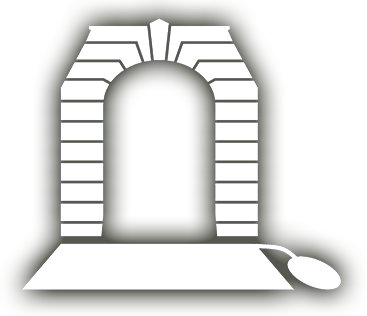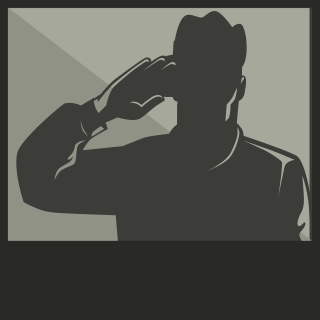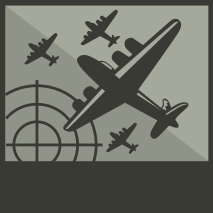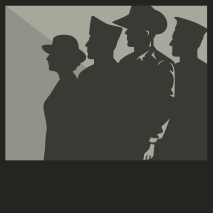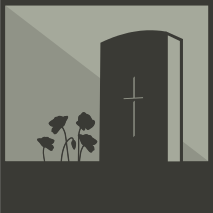BROWN, Roy Leslie
| Service Number: | SX8517 |
|---|---|
| Enlisted: | 11 July 1940, Adelaide, SA |
| Last Rank: | Lance Corporal |
| Last Unit: | 2nd/48th Infantry Battalion |
| Born: | Quorn, South Australia, 14 September 1917 |
| Home Town: | Quorn, Flinders Ranges, South Australia |
| Schooling: | Quorn School, South Australia |
| Occupation: | Assayer |
| Died: | 12 November 1988, aged 71 years, cause of death not yet discovered, place of death not yet discovered |
| Cemetery: |
Whyalla Cemetery, S.A. Row 25, Plot 12. |
| Memorials: | Quorn and District Roll of Honour WW2 |
World War 2 Service
| 11 Jul 1940: | Involvement Lance Corporal, SX8517 | |
|---|---|---|
| 11 Jul 1940: | Enlisted Adelaide, SA | |
| 11 Jul 1940: | Enlisted Australian Military Forces (WW2) , Lance Corporal, SX8517, 2nd/48th Infantry Battalion | |
| 14 Nov 1945: | Discharged | |
| 14 Nov 1945: | Discharged Australian Military Forces (WW2) , Lance Corporal, SX8517, 2nd/48th Infantry Battalion | |
| Date unknown: | Involvement 2nd/48th Infantry Battalion |
First of Three Brothers to Enlist.
On the 14th September 1917, Roy was born out of Port Augusta in Quorn, , a small town in the Flinders Ranges. It was the rail link between SA and Kalgoorlie. Roy was the third son of Ellen Rosina and Ernest John Marrabel Brown. Ernest worked as the northern representative for Wilkinson and Company Limited. Roy’s siblings included brothers John, Colin and Herbert Ross and sisters Norma, Aileen and Jean.
Roy and his siblings attended the local Quorn school where each year Roy performed well in the weekly exams, excelling in both spelling and arithmetic. He was also a class leader in years 5,6 and 7 and was named over several years for his impeccable attendance record which peaked at four years without a day of schooling missed. At the time, local schools also placed student entries in the annual Quorn Show where, again, Roy amassed numerous prizes for his map drawing, quality of his copy book, homework, writing and drawing books over successive years.
At the time, schools actively celebrated Arbor Day. In ’25 the Quorn students planted an avenue of trees in Second Street near the school. Following this, a half day holiday was awarded to the students. The following Saturday, a Sports Day was conducted with Roy excelling in the flat races.
Communities constantly aimed to raise funds to provide both equipment and buildings for their school. Creative activities were planned, including a Children’s Frolic where Kings and Queens were selected for each grade attracting fundraising for the most earned and popular. That year ’27 (Grade 4) Roy attended dressed as a Dutch Boy.
Roy was just 13 when his 56-year-old father Ernest, died at his home in July ’31 after a prolonged illness. He had been unwell the previous year but had hoped to recover and return to work. Ernest was buried in Quorn.
In an added blow for the family, their oldest son John (Jack) who experienced ill health all of his life, died in September ’34, aged just 30. He was a regarded as an indispensable helper in the local church, tennis association, school activities and for a while with the boy Scouts. He was buried with his father.
Post school, R was employed as an Assayer, tasked with assessing the quality and content of metals or ores. However, with the outbreak of WWII all three brothers enlisted, with 22-year-old Roy being the first on the 17th June 1940 and being given the number SX8517. Within months he was placed in the newly formed 2/48th Battalion.
The next to enlist was Ross, who joined the R.A.A.F. in March ’41 as 416090. He was eventually discharged on the 19th Dec ’45. Colin was the third of the brothers to enlist in January the following year as SX17178. He served with the A.I.F. Intelligence Corps in New Guinea Northern Territory and Timor before eventually being discharged on the 26th February, ’46.
Roy’s skills in Chemistry contributed to him being sent to an Instriction School, Field Hygiene and Water Duties Course, prior to having per-embarkation leave. In October the Quorn Town Hall was filled with young people attending a farewell to Private Roy. Dancing and singing performances opened the evening before Roy was formally introduced. He was praised for the ‘great cause he was going to serve’ before a clergy member ‘congratulated Private Brown on the step be had taken in going to fight for the freedom of the world and to prevent it relapsing to paganism. It was a great adventure, and he wished Roy good-bye and a safe return home, explaining that ‘Goodbye’ really meant ‘God Is with you.’ On behalf of the residents, the Mayor presented Private Brown with a fountain pen and an ever-sharp pencil, with Roy then thanking his community. "For he's a jolly good fellow"* and the National Anthem were then sung before dancing followed. With Roy being the first enlistee, a decision was then made to form a properly constituted Farewell and Welcome Home Committee.
By November 17th Roy boarded the Stratheden arriving in the Middle East the following month. He was to become one of the highly respected Rats of Tobruk. Ironically, this term was coined to demoralise the troops and encourage them to surrender. It had the opposite effect and was seized on as a badge of honour.
As snatches of information drifted home, the Quorn Mercury shared small insights of their solders, including just prior to Christmas ’41 that ‘Private Roy Brown, abroad with the A.I.F., has been seeing life, and among his immediate pals is SX3063, from Hawker, Tom Ganley and a couple of Port Augusta cobbers. Among the arts of war they are learning the esteem and reverence which is the just due of the expert scrounger.’
Early in January ’42 Roy was given both a heavy financial fine and confined to barracks for a lengthy 12 days At the same time back home, his brother, Ross was enjoying time back in Quorn. This was followed by Private Colin also being had home leave in October. Ross had to wait until the commencement of February ’43 when the remains of the 2/48th Battalion were also on their way home to Australia via Melbourne. The Quorn Mercury made a cryptic announcement that ‘Pte. Roy Brown is well and resting after some hectic doings abroad.’
Training in Queensland followed this brief leave as the battalion prepared for the tropical conditions they would experience in New Guinea, against a very different enemy. Roy arrived in Milne Bay in August ’43. Unfortunately, the tropical conditions had an effect on his health as he developed an extremely high temperature (Pyrexia of Unknown Origin) then Malaria before Roy was able to return to Brisbane. Both illnesses continued to affect Roy’s health over the following months.
Soon after, Corporal Roy described as ‘who has seen extensive active service with the AIF’ and his brother Sergeant Ross from the RAAF were able to visit their mother back in Quorn before Roy returned to Queensland where in February ’45 Roy was appointed Lance Corporal, just prior to embarking from Townsville for Morotai and service at Tarakan until the closing days of the war. He was finally discharged on the 14th November ‘45
Post war, The Quorn Honor Board was designed to honour those who had served. Both Roy and Colin Brown were listed in the A.I.F. and Ros in the R.A.A.F.
Roy moved to live in Whyalla, as did his mother, Ellen until her death, aged 78 in August ’55. She returned to Quorn to be buried with her husband and son, Jack.
Aged 71, Roy died on the 12th November ’88. He was buried in the Whyalla Cemetery, Row 25, Plot 12.
Researched and written by Kaye Lee, daughter of Bryan Holmes SX8133, 2/48th Battalion
Submitted 5 September 2025 by Kaye Lee

